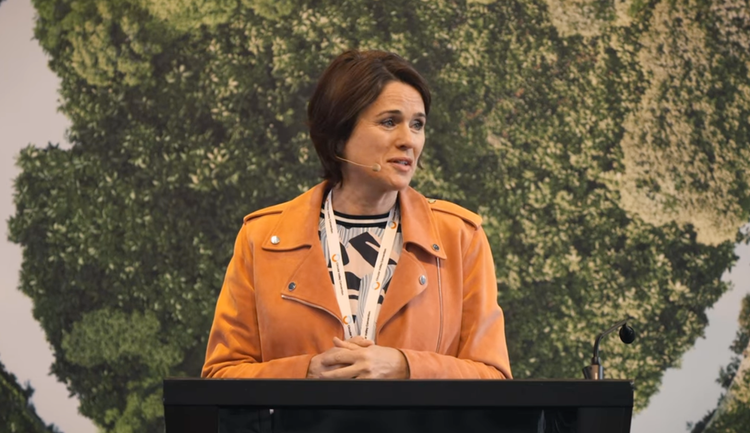2025 guide to enterprise sustainability software (with prices)

A guide to understanding and choosing enterprise sustainability software in 2025, designed for Chief Sustainability Officers.
The world of enterprise sustainability software is incredibly complex and seemingly infinite: estimated at around US$1.4 billion in 2024, the market is expected to grow to anywhere between US$2.82 billion and US$5.6 billion by 2029.
New solutions pop up every day, with each provider offering slightly different features from the others, preventing detailed categorisation.
For a Chief Sustainability Officer having to choose the right solution for their company’s specific needs, the research and scoping exercise can take months – during which they are likely to be inundated by offers and demos.
In this article, CSO Futures breaks down the main types of enterprise sustainability software in 2025, top players within each group, indicative prices and how to determine which solution is right for you.
Main categories of enterprise sustainability software
While a detailed breakdown is difficult – each solution tries to differentiate itself with extra features and capabilities – it’s possible to divide the top players into four main categories (with some overlaps): GHG emissions accounting and reporting; supply chain management; infrastructure and energy management; and product stewardship.
GHG emissions accounting and reporting is by far the largest category in the sustainability software market, with increasing climate disclosure regulations mandating companies to calculate and report emissions around the world.
Implementing software to meet compliance obligations under the EU’s Corporate Sustainability Reporting Directive (CSRD), California’s SB219 bill or any of the laws mandating ISSB-aligned disclosures can be a game changer. These solutions help to automate data collection across complex operations, produce trends reports and identify discrepancies, and stay on top of ever-changing requirements.
ERP and CRM providers with sustainability capabilities
These providers have the advantage of already being integrated into companies’ day-to-day operations, with existing access to accounts, supplier and customer information. Teams tend to be proficient in using them, and the cost of adding sustainability reporting to the existing plan may be lower than implementing an entirely new provider.
Main players
- IBM: In 2022, IBM acquired sustainability data company Envizi, and now offers AI-enhanced automated sustainability data collection, consolidation and reporting. These can be integrated with other IBM products such as IBM Maximo (asset management), IBM Sterling (supply chain) and IBM Environmental Intelligence Suite. Prices for IBM Envizi start at €54,000 but can go up to €185,000 per year.
- Microsoft: Microsoft’s sustainability cloud automates data collection, enables decision-making with customisable dashboards, and simplifies reporting with pre-built templates. The company’s ‘sustainability manager’ pricing starts at US$4,000 and goes up to US$12,000 per tenant per month.
- Salesforce: The CRM’s Net Zero Cloud automates data collection from utility bills, business travel, fleet data, and more, as well as enabling scenario forecasting and ESG reporting. Pricing starts at US$48,000 a year and goes up to US$210,000.
- SAP: SAP offers four different sustainability-related solutions, including an ESG reporting platform, a broader climate action solution covering supply chain and mobility decarbonisation, as well as circular economy and social responsibility solutions. Its CSRD reporting solution, for example, is sold at a starting price of €40,000.
SME focus
- Sage: Sage Earth is a carbon accounting solution that connects to SMEs’ accounting software through an API, then generates a carbon footprint and provides insights on reductions, targets and reporting, at a price of £9 per month. Sage also offers bespoke carbon accounting solutions for large customers.
Climate and sustainability management platforms
These platforms were created purely to support sustainability management, with most including GHG Protocol-aligned carbon accounting, scenario analysis, employee engagement and reporting capabilities. Note that some may offer the option to install hardware on site to collect real-time emissions and energy use data.
Main players
- Clarity AI: Focused primarily on the financial sector, Clarity AI offers automated climate transition planning and scenario analysis, and supports compliance with the EU Taxonomy, SFDR and Basel Committee frameworks. Pricing only available upon request.
- Diligent: Formerly known as Accuvio, Diligent offers centralised ESG reporting capabilities with specific templates for CDP, GRI, CSRD and other frameworks. It allows organisations to assign questions to specific individuals, engage with country teams and unify messaging. Pricing ranges from US$33,000 per year to US$87,500 per year.
- Greenly: Greenly offers a suite of software products from GHG accounting to lifecycle assessment, IT optimisation to cut emissions and sustainable procurement. Pricing starts at £2,700 a year for emissions reporting and can reach £8,800 for more customised solutions.
- Normative: The Normative platform focuses on carbon accounting and reduction, localised regulatory guidance and supply chain engagements, with specific modules for CSRD and CBAM compliance. Pricing is only available upon request.
- Novata: On top of carbon accounting, analytics and reporting, Novata also enables team collaboration and peer benchmarking. The B Corp-certified firm offers sustainability software solutions for companies, but also for financial institutions (with integrated PCAF reporting). Pricing is only available upon request.
- Novisto: Novisto helps companies collect, manage and disclose ESG and carbon data in line with regulatory requirements, with an industry-agnostic customer base. Pricing starts at US$40,000 per year.
- Persefoni: US-based Persefoni positions itself as a climate management platform largely focused on reporting, targeting both corporations and financial institutions. Pricing ranges between US$55,000 and US$260,000 per year.
- Sinai: This AI-powered platform integrates carbon accounting and reporting with climate transition and financial planning, while enabling project management, collaboration and progress tracking. Sinai also offers specific modules for compliance with CSRD and Brazil’s sustainability reporting and carbon market laws. Pricing only available upon request.
- Sphera: Developed with a focus on the Chemicals, Oil & Gas, and Industrial sectors, Sphera streamlines ESG data collection across large companies and their supply chains and claims to reduce reporting time by 50%. Average contract price is around US$16,000.
- Sweep: Carbon and ESG data platform Sweep allows companies to collect and track data across their value chains and meet reporting requirements – both mandatory (CSRD, SFDR, California Climate Laws) and voluntary (GRI, CDP and ISSB). The firm doesn’t list prices on its website, but third-party sources suggest pricing starts at US$254 per month.
- Watershed: Watershed focuses on audit-grade climate data collection and reporting, with specific solutions for different regulatory frameworks and across sectors such as apparel, consumer goods, retail, technology and financial services. Prices can vary widely, with reports placing costs between US$37,000 and US$264,000 annually.
- Workiva: AI-powered Workiva aims to unify financial and sustainability reporting as well as risk management to support integrated reporting in line with CSRD and other regulations. The solution also enables double materiality assessments and collaborative workflows for sustainability teams. Pricing depends on the solutions contracted, but revolves around US$400,000 per year.
SME focus
- FuturePlus: The platform launched in 2021 helps businesses to measure, manage and communicate their sustainability performance and growth, with a focus on continuous improvement. Pricing starts at £95 a month for micro-enterprises of fewer than 10 people and goes up to £350 for SMEs (50-250 employees) and £1,250 a month for large enterprises.
Supply chain management platforms
While several of the sustainability software solutions listed above offer some level of supply chain emissions management, companies with complex value chains may prefer platforms that are entirely dedicated to Scope 3.
Main players
- CarbonChain: CarbonChain is focused on supplier monitoring, supply chain emissions and compliance with the Carbon Border Adjustment Mechanism (CBAM) – particularly for companies in manufacturing, commodity trading and banking. Pricing only available upon request.
- EcoVadis: EcoVadis is one of the best-known standards for supply chain sustainability assessment – and it comes with a digital platform where companies can onboard suppliers to access data and monitor progress. Subscriptions include carbon and sustainability assessments as well as e-learning options, and range from around €1,000 to €6,500 a year.
- EmitWise: EmitWise targets companies with complex supply chains, enabling procurement teams to reduce Scope 3 emissions and increase supply chain transparency. The solution includes access to emissions factor databases, supplier management and target setting and tracking, with pricing starting around €40,000 per year.
Specialised sustainability software
Beyond generalist sustainability software platforms, certain players have specialised in just one aspect of sustainability management, such as communication or employee engagement.
Sustainable marketing and communication: Flourish
Launched in 2023, Flourish leverages AI and a partnership with law firm Taylor Wessing to provide customers with real-time greenwashing risk assessments and help them tailor impactful and truthful sustainability messaging.
Employee engagement and donations
Deedster
Deedster is an example of sustainability software focused on employee engagement: its gamified educational platform allows companies to incentivise learning and action within their organisation, promoting a culture shift.
Giki Earth
Giki Earth provides tools to gain insights on employees’ attitudes towards sustainability, and to promote engagement across organisations.
100 Ways in 100 Days
Developed by behavioural psychologists, 100 Ways in 100 Days is an e-learning programme helping employees develop more sustainable habits.
How to choose enterprise sustainability software
In her book, How to be a Chief Sustainability Officer, sustainability director Anna Krotova shares a few tips to help CSOs cut through the noise and make the right decision for their needs.
First, it’s crucial to identify clear needs: from carbon footprint mapping and double materiality assessment to supply chain engagement and sustainable product design, each company will seek different benefits from their software solutions. These will also depend on your company’s size and the maturity of your sustainability strategy.
Then, list the pain points you hope to solve with automation, and have transparent conversations with shortlisted providers about those – despite what software providers claim on their website, miracle solutions are rarely a reality.
Finally, check your existing capabilities: Krotova suggests it might be cheaper and more practical to expand your existing ERP contract than to implement an entirely new solution. Large organisations could also have the option to build their own IT infrastructure for sustainability.







Member discussion